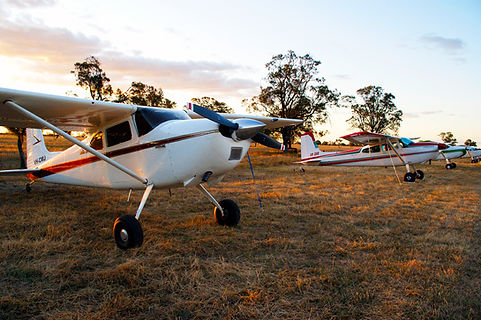
About our aircraft
The Cessna 180/185 is an all metal high wing four passenger plane with a fixed, conventional landing gear. The wing has an NACA 2412 series airfoil section and used a single extruded aluminium front strut. A semi-monocoque fuselage is used and 2 yard wide doors open on each side of the cabin. All models of the 180 are powered by a 471 cubic inch six cylinder Continental air-cooled engine with a constant speed aluminium alloy metal propeller.
All versions of the 185 were factory equipped either a Continental 10-470-F engine or a Continental 10-520-D. A three bladed propeller was offered on certain 10-520-D powered planes.
The Cessna 180 received it’s approved type certificate on December 23, 1952. The first dealer deliveries were early 1953. The first production models were certified as both land and sea planes.
The 185 was introduced in 1961 and was the first to be called the Skywagon. Compared to the 1961 model 180, the 185 had stronger firewall, landing gear and axles. The fuselage was extended and a third window was added increasing seating to six. A long dorsal fin from the vertical stabilizer was the main visual distinction from the 180.
Landing Gear
The main landing gear, which is fabricated from chrome-vanadium spring steel, is probably the most forgiving and maintenance-free in the industry. The tail wheel features a tubular steel spring with a steerable and full swivelling pneumatic tyre and wheel.
Fuel Tanks
The fuel system is a simple gravity fed type with wing mounted fuel cells. Standard fuel capacity is 227 litres (60 gallons) total for the 1953-56 models and 246 litres (65 gallons) for the 1957-64 models. In 1961 large optional tanks totalling 317 litres (84 gallons) were offered for the first time on the 185, in 1962 they became available on the 180. The 1953-61 models have a single outlet in each tank. Beginning with the 1962 models two fuel pickups are used in each fuel cell, fore and aft rather than one. Addition of this second fuel outlet in each wing cell has the effect of giving less unusable fuel in some sections of the adverse attitudes of flight. The fuel outlets are coupled through a four position selector valve and both tanks can be used at once or each separately. The fourth position is off.
Due to the high angle of climb and descent possible and being of the gravity feed type, the usable fuel of these tanks has to be rated to all attitudes of flight.
In 1957 the gross weight of the 180 aircraft was increased by 45kg (100 lbs) and the fuel capacity increased from the original 227 litres (113 litres per wing) to 246 litres total.
Wing Flaps
Large single slotted Fowler type “Para-lift” flaps are used on all models. They increase the size of the wing as well as the camber. At half flaps, excellent lift is obtained and at full 40 degrees of flap, a very high rate of sink is possible. The flaps are operated by a single manual lever and maximum flap lowering speed is 86 knots (100mph) on all models except the 1964 and later models which allow 95 knots (110mph).
Floats and skis
All models of Cessna 180 and 185 including the original 1953 model are approved for operation on floats. In 1955, the Edo Corporation introduced an amphibious model which could be installed on any 180. The Cessna 180 was the first aircraft of a four place type ever to be approved for use with retractable gear amphibious floats. In addition, a very wide variety of ski installations are al approved, including wheel replacements, wheel penetration and hydraulic retractable wheel skis.
